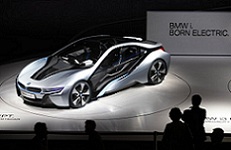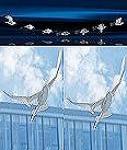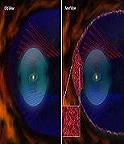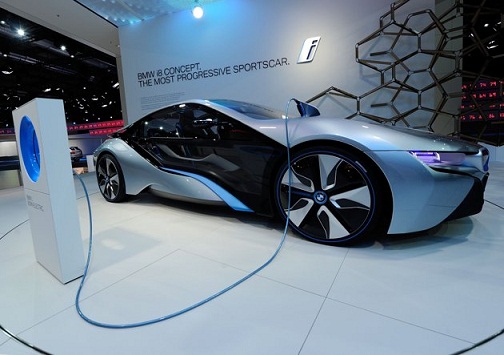
BMW HYBRID AND ELECTRICAL CAR i3,i8
BMW unveiled a pair of concept cars Wednesday, one a hybrid and one electric, made of light-weight carbon fiber and a see-through glass exterior. The cars are expected to go into production within the next two to three years. The carbon fiber in the i3 city car and i8 sports car significantly reduces the weight of the vehicle and the size of its frame, giving designers more flexibility and creating more interior space for passengers, said Richard Kim, who designed the exteriors of both vehicles. The material, used in the aerospace sector and also for high-end bicycles, is valued for its strength-to-weight ratio. Its uses are expanding, however, and engineers are designing everything from camping equipment to pool cues. For the German automaker, it allowed for more glass where there is traditionally metal, Kim said. The doors of both vehicles are mostly made of glass, along with much of their roofs and tail ends.
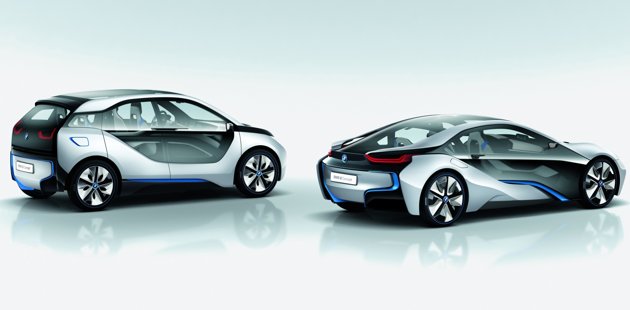
BMW said the car offers "superb safety in the event of a collision." The final product may not appear as dramatic, but will have the same feel as the concept cars, Kim said. "You may not see as much glass, but you will be able to see the light coming through. The cars officially debut next week at the Los Angeles auto show. The i3 is expected to go into production in 2013, with production of the i8 following a year later. The cost of the car has yet to be determined, though carbon fiber is not cheap. The four-door i3 is designed for urban driving, with its wheels pushed out to the corners of the frame for stability. It has coach-style doors, with rear and front doors swinging open at the center of the vehicle. The added stability of carbon fiber allowed designers to eliminate the support pillar traditionally found between the front and back doors, which will make it making it easier to enter and exit the vehicle,
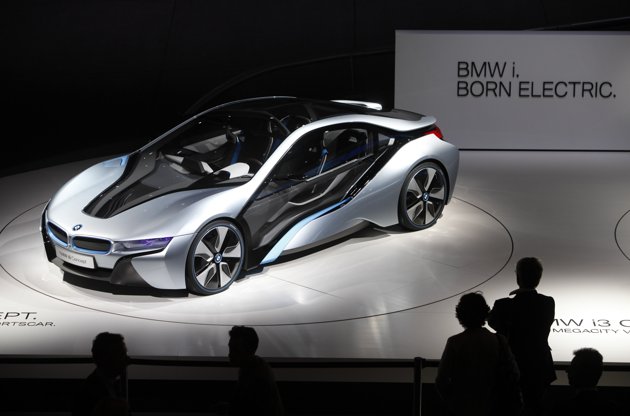
The i3 comes in an all-electric version that can go 80 to 100 miles on a single charge, but buyers have the option of adding a small gas engine that would recharge the battery if needed. It takes about six hours to fully charge the battery. The sporty i8 has two winged doors made of glass and a sleek silhouette. The exterior is designed to help the car cut through the air more efficiently. The all-wheel drive car has a battery and a gas engine that work together, with the battery powering the front wheels and a gas engine powering the rear wheels. Without the gas engine, the car has a range of about 20 miles, but fully charges in less than two hours. http://news.yahoo.com/bmw-unveils-electric-hybrid-concept-cars-190858771.html
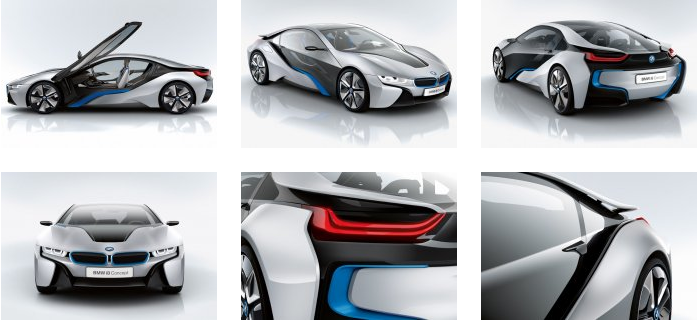
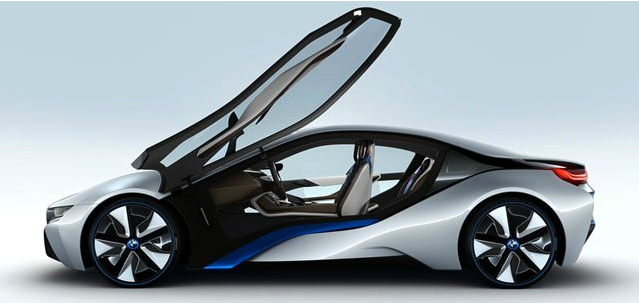
Dynamic side view. Taut surfaces and precise edges form an extremely sculptural and organic surface structure. The precise lines along its flanks and BMW i “stream flow” also give the BMW i8 Concept a strong sense of powering forward even when it is standing still. The BMW i8 Concept's doors swing upwards like wings to provide an undeniably emotional and sporty allure. Below the doors, the silver-colored layer moulds the car's flanks into a powerful wedge shape, opening out from the door sills towards the rear. A blue flourish accentuates the dynamic presence of the sills. Together, the hood and door sill sculpting emphazise the BMW i8 Concept's forward-surging stance, and their smooth lines imbue the car with a touch of lightness.

